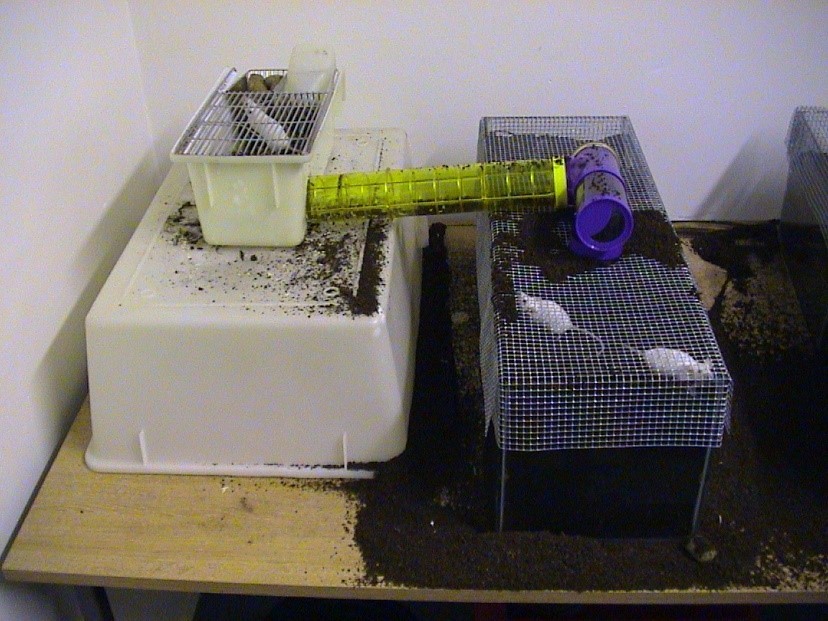Evaluating enrichment approach 3: Motivation tests
Motivation tests involve animals choosing to ‘pay a price’ (e.g. lifting a weighted door or squeezing through a gap) in order to gain access to something they want, such as additional space, a nest box, or access to conspecifics (other animals of the same species). This type of study allows investigators to gain considerable insight into what laboratory animals really want and need, and the importance the animals attach to features of their environment (including other animals). Some of these studies are based on the way that humans behave when buying consumer goods – we are prepared to pay a high price for something that we want very much, but only a small cost or nothing at all for items that we do not value highly.
The figure below shows an example of a motivation test designed to evaluate the strength of motivation for burrowing substrate. The mice must perform an operant task, in this case press a switch, in order to reach the enriched cage with the substrate, and the number of times the switch must be pressed to gain access to the substrate is increased with each trial. The point at which the mice will no longer continue to press the switch represents the cut-off point for the ‘price’ they are prepared to pay to access the burrowing substrate.

Pros and cons
The advantages of this approach are:
- A greater depth of insight is achieved into an animal’s motivation for a given enrichment item.
- It avoids the assumption made in preference tests (see above) that animals are choosing between options based on their own best interests.
- The ‘value’ of different enrichment items can be compared, using the same scale (i.e. the amount of ‘work’ animals are willing to do to gain access to them).
- A robust experimental approach is more likely to result in publishable work that contributes to animal welfare knowledge.
Care should be taken with this approach because:
- The ‘price’ animals must pay for access to the enrichment may impact on their welfare – they must be able to freely choose to ‘pay the price’ and should not have to pay to access food, water or anything essential for their wellbeing.
- Ethical approval is more likely to be required than for simple behavioural observations or preference tests, which may not require any.
- A more complex experimental set-up is required.
Guidance on how to conduct an evaluation of environmental enrichment.

